OWNERSHIP
100% (under direct applications)
100% (under direct applications)
REE, Heavy Mineral Sands, and Ni-Cu-(Co)-(PGE’s)
Western Australia
The Project is located approximately 200km northwest of Meekatharra and covers an area of 1,060km2.
The Project contains multiple targets, including REE and thorium in enriched monazite sands, REE ion adsorption on clays within the widely preserved deeply weathered lateritic profiles and lastly REE occurring in plausible carbonatites associated with alkaline magmatism.
Historical exploration by BHP Minerals and subsequently by Astro Mining in the 1990s confirmed the presence of heavily enriched monazite sands almost 30 years ago.
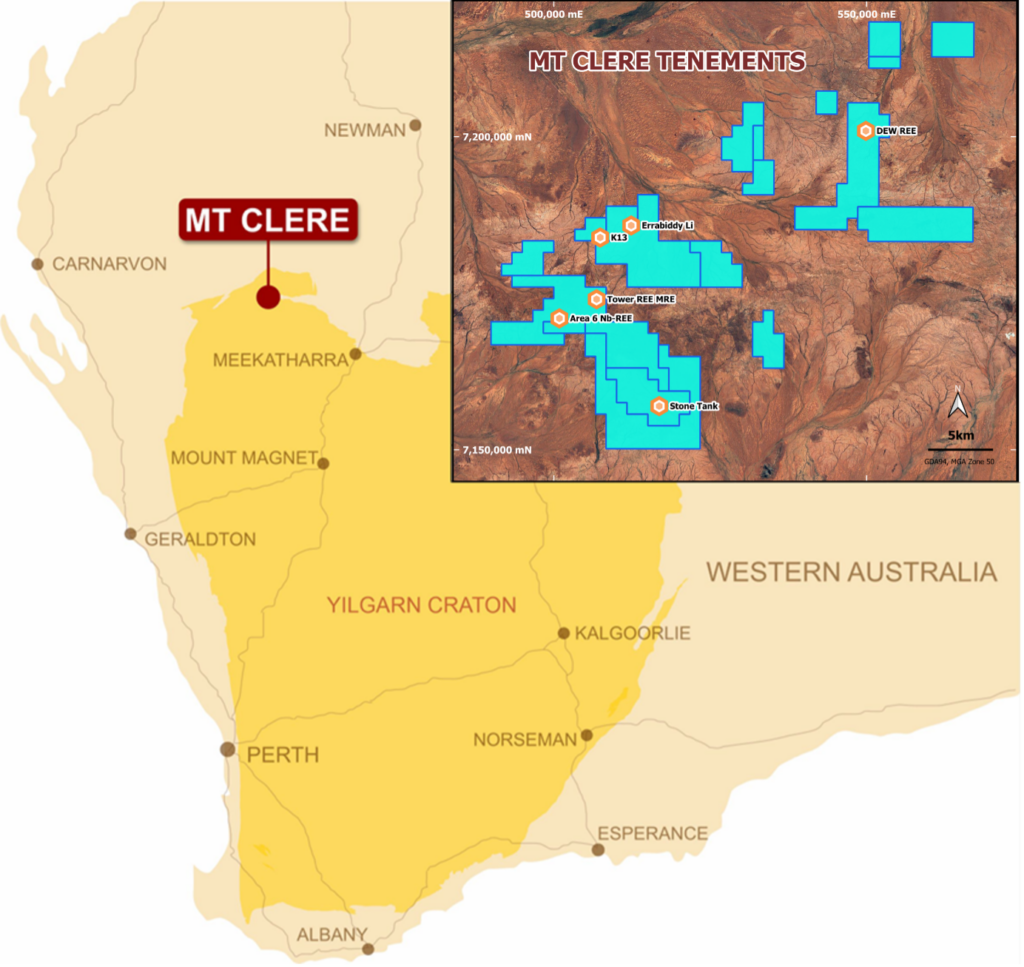
Figure 1 – Location of Krakatoa Mt Clere exploration licences within the Yilgarn Craton, Western Australia. Insert is highlighting current prospects and the Tower REE Resource within the tenure; some of many opportunities at Mt Clere.
Currently the company has 6 areas of interest. These areas are either supported by geochemical or geophysical work programmes with the opportunity for future discovery.
Targets such as Stone Tank and Area 6 are dense deep seated intrusive with elevated Nb and REE surface geochemistry. DEW is prospective for clay hosted ion absorption REE similar to the Tower REE resource. K13 is a conductive geophysical target while Errabiddy has a extensive geochemical footprint for a LCT system.
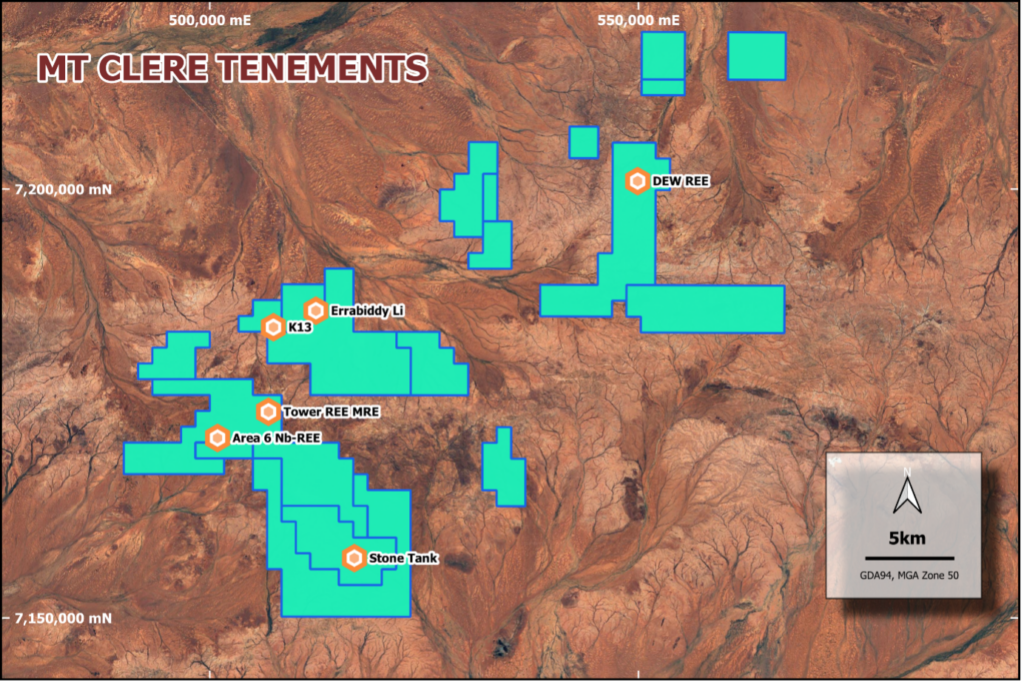
The stone tank area has a regional and localised elevated Niobium and Rare Earth element within catchment. The area has a regionally dominant gravity signature within a structural corridor.
The company has defined several dense gravity features in which future exploration will be completed. These features are thought to be cores of intrusive features such as Carbonatites. Drilling of these is expected during 2025.
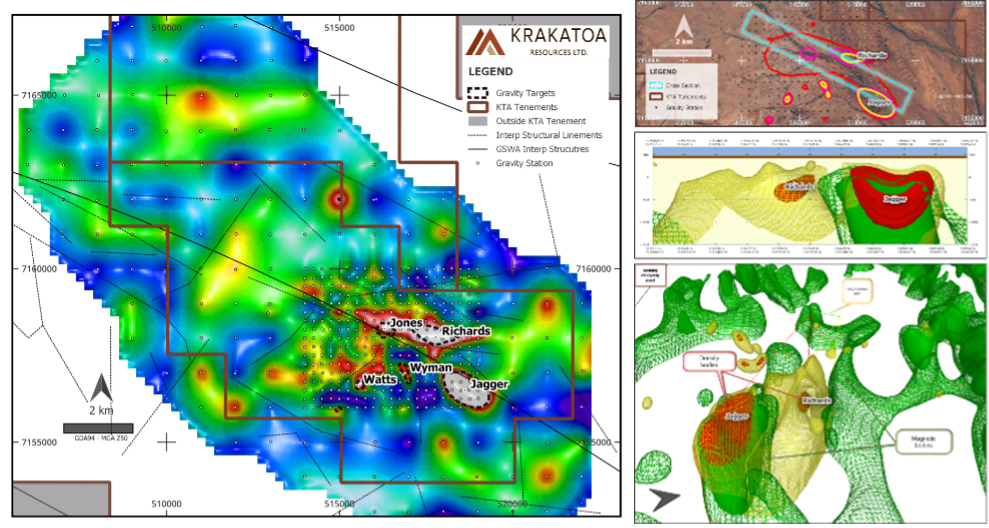
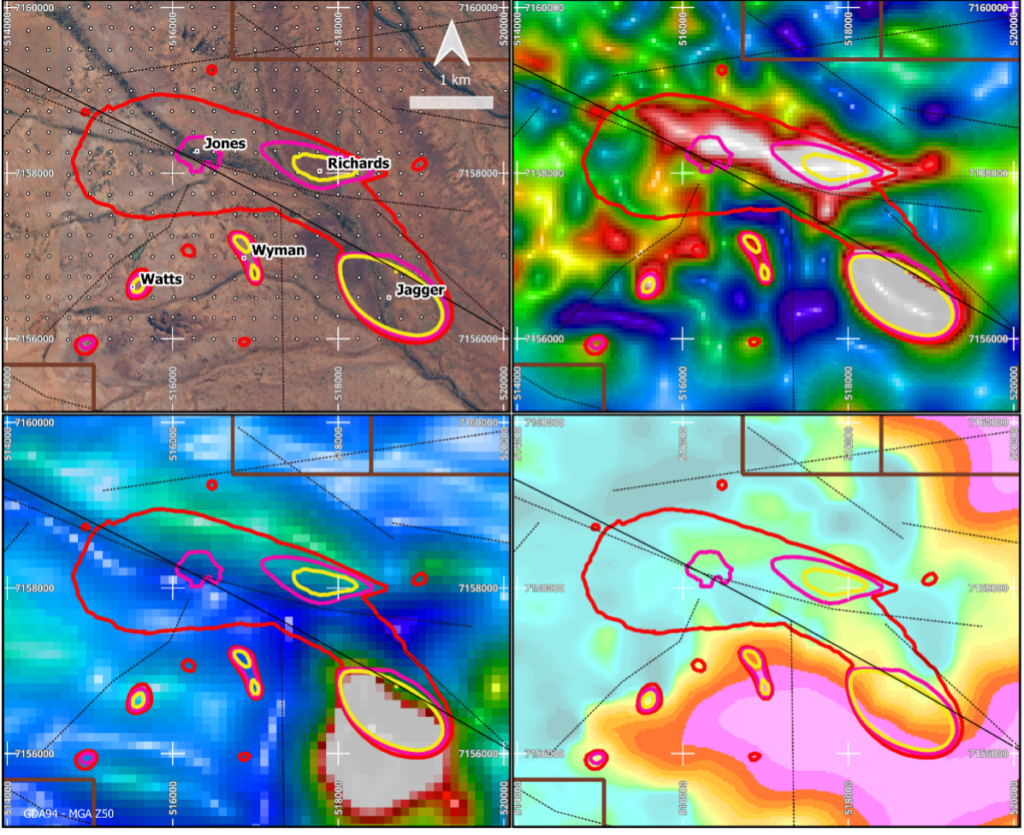
The region has been multiply deformed and metamorphosed at medium to high grade, and intruded by granite and pegmatite, and then later deformed and metamorphosed at medium to high grade. Parts of the region (the Yarlarweelor Gneiss Complex) were yet further deformed and metamorphosed at low to medium grade during the Capricorn Orogeny at 1830–1780 Ma, intruded by voluminous granite sheets and dykes.
Carbonatite dykes and lamprophyre dykes, which have been identified in diamond exploration, are probably common and could have been emplaced at this time.
The Yilgarn represents the deepest and most severely weathered region in Australia. Large tracts are covered by a considerable thickness of regolith, being dominated by sand plains, laterite and transported sedimentary cover.
The tenement is covered extensively by laterite, which is being eroded into unconsolidated sand, silt and gravel in braided steams and broad alluvial sheet-wash and colluvial plains. The presence of this regolith can commonly be a major impediment to exploration, but here monazite is concentrated in the alluvial areas and REE probably is enriched in the lateritic regolith, so regolith is the primary exploration target.
The Errabiddy Shear Zone, a 5km to 20km wide major crustal suture that binds the accreted Palaeoproterozoic Glenburgh terrane to the Archaean Yilgarn Craton is partly captured within Krakatoa’s applications. Such reworked craton margins are a favourable setting for many large-scale gold and base metal deposits, where long-lived crustal-scale structures can act as conduits for the transfer of heat and mineralising fluids from the upper mantle. The structural corridor associated with the Errabiddy Shear Zone offers the Company further significant gold exploration opportunities.
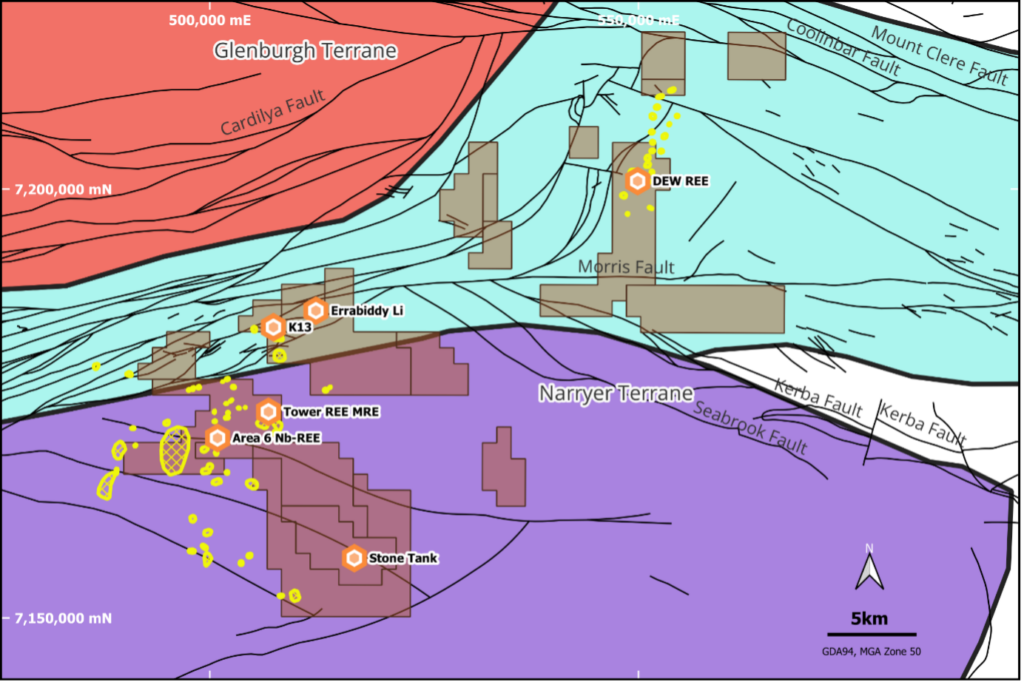
Elevated Thorium Anomalies over GSWA Tectonic units and major structural corridors.
The discovery of the Tower deposit was made in April 2022. Within 7 months the discovery was transformed into a clay hosted REE resource (JORC 2012).
The maiden Mineral Resource estimate of 101MT @ 840ppm TREO (Total Rare Earth Oxide)(1), which is highlighted by thick zones of near-surface mineralisation. 40% of the Mineral Resource estimate has been classified in an Indicated category. Significantly, the existing resource has the potential to substantially grow in size and scale as the Mineral Resource estimate only incorporates 20% of the identified Exploration Target drilled to date.
An Exploration Target(2) for the Tower area of 57 – 481MT at 530-1050ppm TREO.
Krakatoa has completed another milestone achieving excellent metallurgical recoveries on the critical key rare earth elements Neodymium (Nd) and Praseodymium (Pr) of up to 64% and 61% respectively using simple extraction techniques. These initial recovery rates compare favourably with other globally significant clay hosted REE projects.
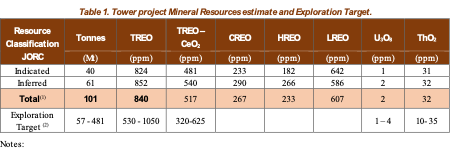
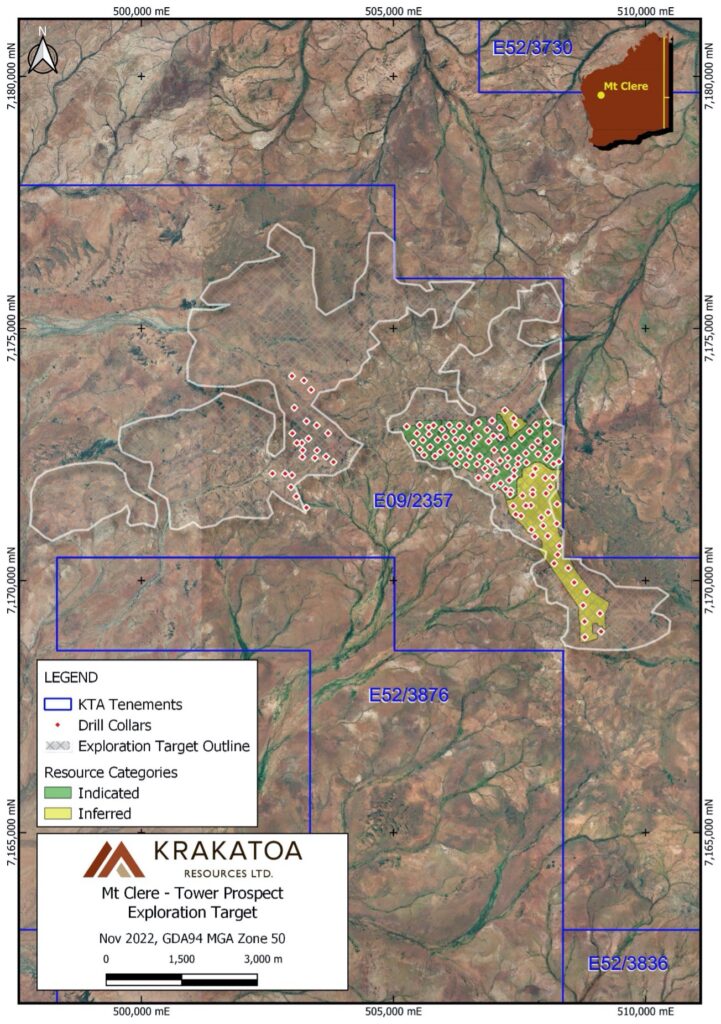
Map showing the extent of the Tower clay hosted REE Mineral Resource and the potential expansive Exploration Target extensions


HEAD OFFICE
Level 8, London House 216 St. Georges Terrace,
Perth WA, Australia 6000
OFFICE:
MOBILE:
+61 457 289 582 (Colin Locke)
EMAIL:
© 2025 Krakatoa Resources Ltd. | PRIVACY POLICY
DESIGN BY JAZ
